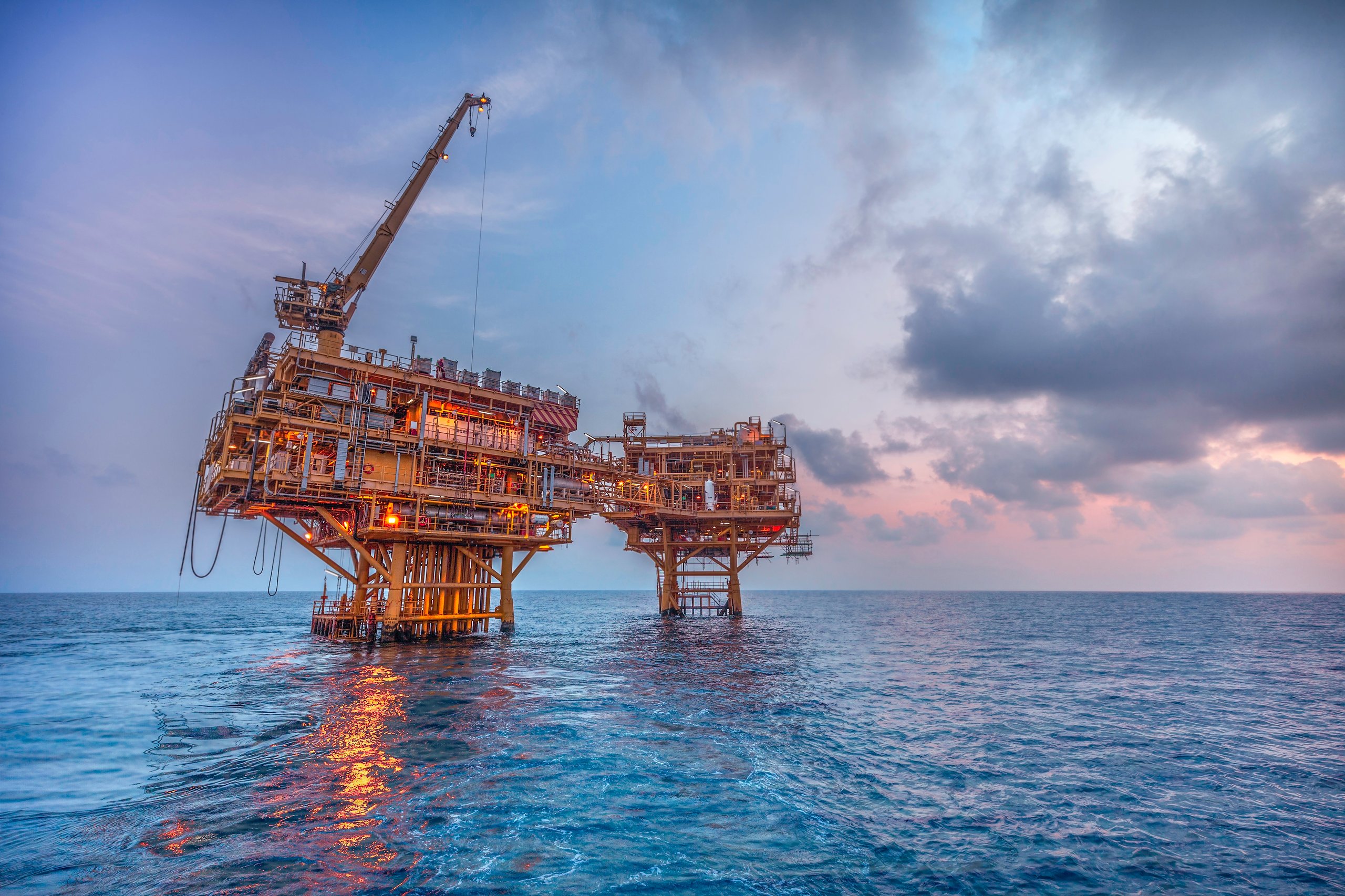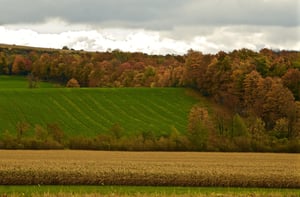Valeura Energy Inc. (TSE:VLE) Chief Executive Officer Sean Guest caught up with DirectorsTalk for an exclusive interview to discuss 2023 trading, growth projects, resilience of assets,new gas turbine at Jasmine, portfolio changes and M&A.
Q1: Sean, you’ve just announced your 2023 Q4 operational update and a 2024 guidance. To start, could you just talk us through some of the highlights on how you closed out 2023?
A1: 2023 really was a good year for Valeura Energy, and when we look back from where we were in 2022, a cash shell doing new business, in 2023 we’ve not transformed the company to a significant producer here in Thailand, as well as generating a significant amount of cash.
So, when we entered 2023, we really had the objectives of close the deal with Mubadala to acquire the assets, a deal we signed in ’22, pay off all the debt the company had and build up a cash pool.
If you look at what’s happened, we closed that deal in March, we paid off more than $50 million in debt that we had, and additionally we’ve taken the net cash position from the company of $5 million, at the end of ’22, to more than $150 million at the end of 2023. So a good financial year.
It’s also involved organisationally bringing three separate companies together into one office and one structure, which we’ve done. We’ll now take that organisation into 2024 to look at how we can expand on the savings that we saw in 2023 to deliver a more efficient and cost effective organisation.
So, it’s going to be an exciting 2024.
Q2: Just looking at 2024, I know the business is described as a ‘growth company’ so what is in store for the year ahead with regards to growth projects?
A2: If we look at the four fields that we now have in the Gulf of Thailand, we’re really looking at organically we’re going to be able to grow the production in those fields.
So, if in ’23, we were just over 20,000 barrels a day average for the year from the four assets, 2024 is now looking for somewhere in the guidance we’re saying between 21,500 but more to 24,500 barrels a day on the upside.
So, a good increase in production, and its’ coming from two separate projects that we’ve got: the Nong Yao C development project and the Wassana oil field redevelopment.
Nong Yao C, that new production facility should be installed next month and that will allow us to kick into drilling that project in March, and it should then come on in late Q2. That’ll take production there from 7,000 barrels a day net to us up to about 11,000 barrels a day net to us.
The Wassana oil field is back on production now and contributing to our results, we’ve got the rig there drilling horizontal wells, and we’ll do more drilling there this year as well. Also, with the new oil that we found there in the appraisal programme last year, we’re also looking to come forward with a new development concept at Wassana in 2024.
So, those two fields are really underpinning that production growth we’re seeing this year.
Q3: You noted in your announcement that you see 2024 as a year that you should generate both resilience of your assets and growth. Could you touch on what you mean by resilience of the assets?
A3: One of the challenges that we tend to get from the markets is that the company has a short reserve life index, with the high production that we have from these fields and the reserve from them, people say maybe there’s only 4-6 years of production left there.
What we try to show people, and we’ve provided the data in our presentation as we’ve gone along, is that every year with the drilling that we’re doing, these assets have pretty well had the full reserves that have been produced have been replaced every year.
When we signed the deal with Mubadala in ’22, we showed those numbers and then at the year end of ’22, the external reserve auditor showed that again, we pretty well replaced 100% of the production. We expect a similar result this year, our reserve auditor is working on that, but we expect to again a free well replace reserve.
So, your reserves are staying the same, your reserve value is largely staying the same as you move forward and taking the cash out from the assets from the production during the year.
We talked about the growth in Nong Yao and Wassana, but really the two fields that we can look at that are showing this resilience are Jasmine which was developed with 7 million barrels recoverable has now produced over 90. More importantly, Manora, one of our smaller fields, was due to be abandoned in 2022, we’ve done drilling on it in ’22, we’ve done more drilling in ’23, and now we’re looking at the actual life of that field extending out probably until 2026, maybe beyond that.
Q4: Just going back to the resilience part, does that mean you expect them to go on forever?
A4: People ask this because you can see with a full reserve replacement every year, it’s almost like it came as a perpetual motion machine.
No, it wont go on forever, we know that Jasmine and Manora are late life fields, and we’re looking at to continue to push them out, but we’re still looking at growth at Wassana and at Nong Yao.
They will have to stop production at some point in time but we’ll be able to quantify this a bit more when we produce our reserve numbers, likely around the end of February or early in March we’ll put those out and we can talk about again what we’ve done in the previous year on reserve replacement.
Q5: One other thing that caught my eye in the announcement was your new gas turbine at Jasmine. What’s this project really about? Is it a greenhouse gas emissions reduction project or is it more about OpEx savings?
A5: In actual fact, it’s both.
If we look at the greenhouse gas emissions, the field Jasmine was developed about 20 years ago so you can imagine the social climate you had at that time, the standards you had at that time, we were not really looking at the emissions levels.
The team’s been very good now at going back to that and saying, we’ve got a waste gas stream that is very low energy but they found generators that exist now that can use that waste gas to generate power on the platform.
So, you’re burning that waste gas, which is reducing emissions, but also, you’re no longer having to use diesel to then generate the power. You’re reducing the diesel use which further reduced emissions, but importantly it also reduces your cost because you’re no longer having to acquire and burn that diesel so it’s lowering the OpEx but also significantly reducing the emissions from the Jasmine field.
The team is really coming up with a lot of new ideas since we’ve taken over the company as to how we can do things like that and try reduce emissions further.
Q6: What about expansion plans for Valeura Energy? It’s a very different company than it was 2 years ago, can you keep growing and do you plan to change the portfolio further?
A6: When we talked about growth a moment ago, we talked ab out the organic assets of the fields that we own. We are still looking at other assets, we’re looking at M&A, we’re looking at corporate as we look to try and grow the company further. We do still have an aggressive growth strategy for the company.
Portfolio-wise, we would like to bring more gas into the portfolio, a lot of our executives’ backgrounds is in big gas companies so we’d look at that lower emissions and that’s a better way to go.
That will be a focus for this year, to start to look at the new business opportunities out there, we’ve developed good relationships in the region as well as having a very solid team here in Thailand. It’s how we leverage those to get back on the front foot with M&A this year.
Q7: Just before we finish, do you have any closing thoughts?
A7: As we said, 2023 was a transformational year where we took the company to now being a producing company with an organisation here that’s looking at after that.
As we go into 2024, we’re going to take the assets that we’ve acquired and show that they can deliver cashflow not just immediately but also into the near and mid-term as we go forward. Also, when we get to the end of 2024, I want to be able to look back and say that this was also a year that the company was able to do another transformation acquisition in M&A.
There’s lots of deal out here, we’re situated in Southeast Asia with a high demand for energy, and they’re looking at all forms of energy, and we look at being part of that business.






































